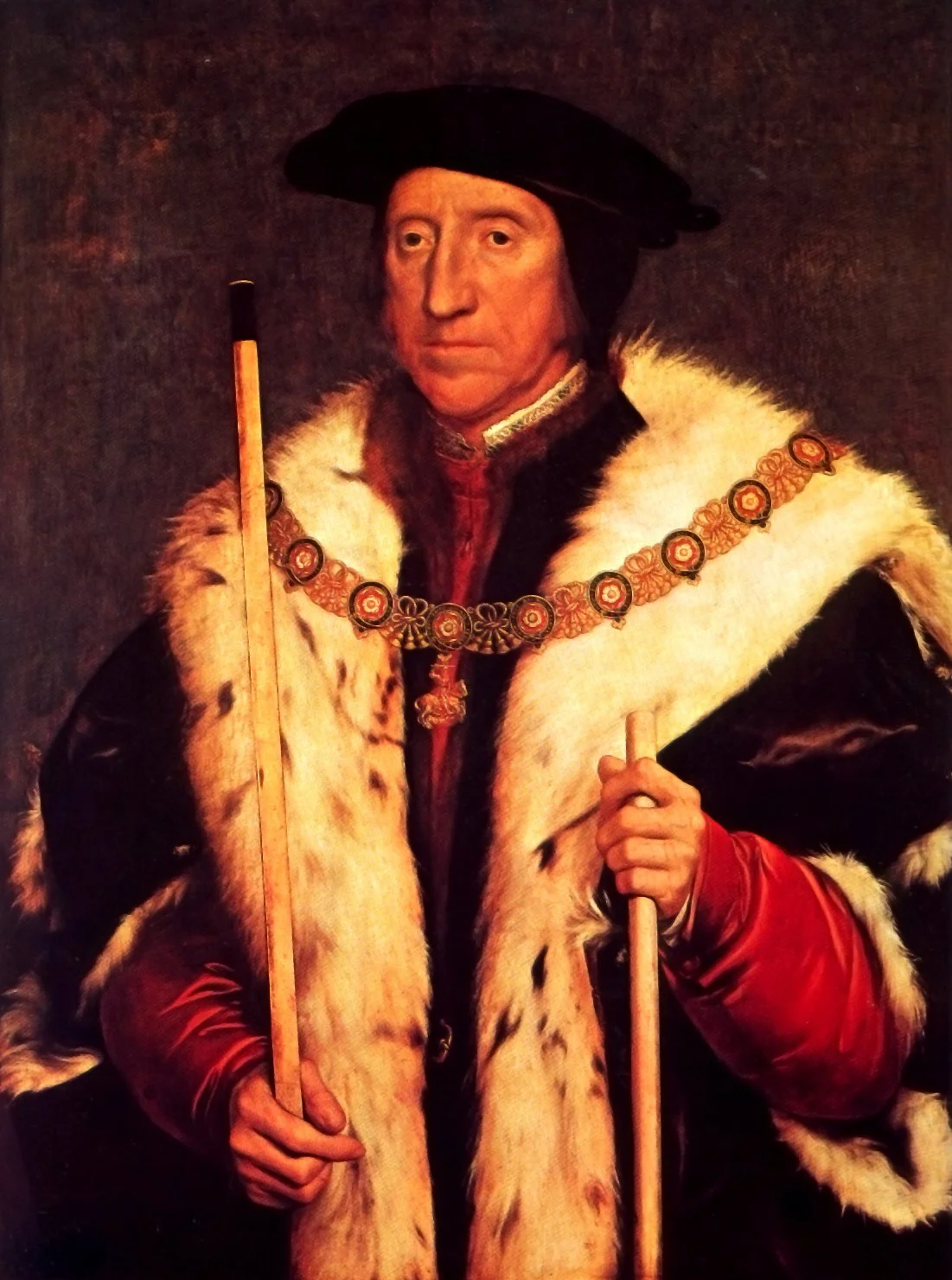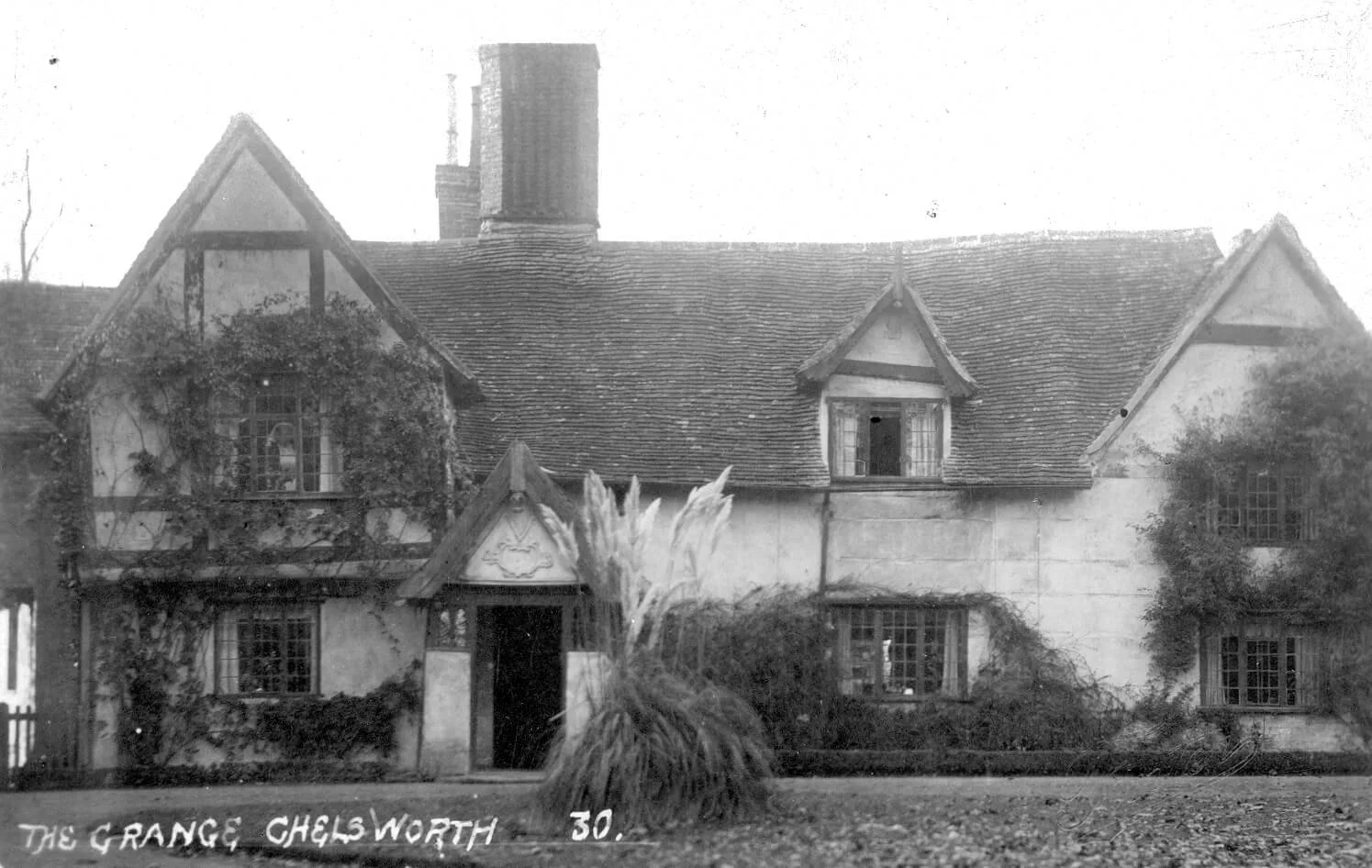The Grange in the 1840s
The Grange is listed Grade II* by English Heritage. The other Grade II* property in village is Forge Cottage. The great majority of the rest of the houses (and our old red phonebox are listed too). The Grange is special for several reasons, outlined in detail below. The Grange finds itself in rather exalted company, at least in one website's opinion. The buildings of the Grange date from about 1300 onwards. Most of the fabric visible now dates from 1400-1500. The Grange occupies the site of former buildings dating back to Saxon times and possibly earlier. Chelsworth, or Ceorleswyrthe, was granted by King Edgar in a charter dated 962 and was already well established as a village then. Chelsworth lies on an old Roman road and archeologists have discovered Roman remains in the village.
At the back of the Grange lies an island formed between the River Brett and an old moat. The island was named 'The Snayle' from at least 1599 and is the site of the areas named 'The Mote' and 'Hall Garden'.
King Edgar's charter of 962 mentions a Saxon mill (called the 'Upper Mill' that was situated on our island described as 'Mill Hill'. Court records from 1599 and 'Chorography of Suffolk' published in 1602 mention ' a most ancient house' with moats to the west of the church, (in our orchard) which was taken down by Howard, Duke of Norfolk and rebuilt at Stoke Parke.
The Grange as seen today mainly dates from 1400-1500. It is thought to be a rebuild (in 1400 approx) of an older hall house, attached to a long gabled crosswing of the earlier structure. Part of the crosswing was rebuilt again around 1650, so that all that remains of the earlier structure is the kitchen. This subject can be read of in great detail in the Historical Survey of The Grange by Leigh Alston.
The following paragraphs are in development as research proceeds. What we know at present of the ownership of The Grange is as follows.
The original builder / owner of The Grange as we see it now was a rich wool merchant who redeveloped the property in about 1400.
The Grange was owned by William Lynsley in 1632. He was Rector of Chelsworth from 1610-1630. He is buried in the churchyard. He left it in his will to Annabella his wife.
The Grange, its land and attached cottages passed into the ownership of the Green family some time just prior to 1640. It was acquired by Hugh Green for his family. His early death led to his father John leaving the house to his grandson (also Hugh) in his will of 1653. Hugh Green junior left the Grange in his will of 1660 to John Green and his wife Abigail who owned the Grange until 1707. It was they who added the porch in 1689 and it may well have been them who installed the current metal casement windows that date from the same period. John Lamb took over the house in 1707 after the Greens failed to pay a debt. He sold it immediately to John Cuthbert (or Cutbert) who is described as a 'maulster' or maltster.
The Malthouse section of the Grange dates from about 1550 and is constructed from oak timbers that were originally from another building of unknown date and location. There is clear evidence of the building being used as a maltings and is considered to be one of the earliest purpose made maltings in Britain. There are numerous referances to 'domus brasiliatorum' and 'malting offices' in the 'backards' of the Grange in English Court Rolls.
Sir Henry Austen, in his history of the village, alleges that Killigrew the 'celebrated jester' of Charles II's reign, was banished to this house and died here. This title originates with Samuel Pepys and is a nickname for Thomas Killigrew the Elder (1612-1683), who was at one point the English Ambassador to the Court of Venice and later became a prolific and popular playwright, built the first Drury Lane Theatre and is buried in Westminster Abbey. Sir Henry does not cite any evidence for his claim.
The Grange was in the ownership of the Cuthbert family for about
100 years. The ownership of the Grange passed from John Cutbert and his wife Ann to their second son John (born 1716) and his wife Sarah. Their third son was the naval hero Robert Cuthbert (born 1755) whose actions at the Battle Of The Nile brought him to the attention of Nelson. A lot is known about Robert Cuthbert and a fascinating naval biography of him can be seen on our page dedicated to him.
The Grange was probably inherited by Robert's older brother John (b. 1746) and later by his younger brother Thomas who died in 1816. The estate was sold in 1814 to Sir Robert Pocklington. Sir Robert was a knight of the military order of Maria Theresa, created as such in the late 18th century by Francis II, the last emperor of the Holy Roman Empire. Legend has it that Pocklington saved the emperor in person from the attentions of the French in battle.
Sir Robert Died in 1840. His widow Lady Catherine Frances Pocklington married Sir Henry Austen and it was he who wrote the first history of the village and commissioned the drawing of The Grange in 1850.
In the village survey of 1870 the main resident of The Grange was Ellen K Pocklington aged 39 (1830 - 1907), with a female servant called 'Smith'. In 1871 she has 15 year old Agnes 'Annie' Herbert whose parents lived in Church View. By 1881 she has 57 year old cook Eliza Smith and 16 year old servant Jane E Lister. In 1896 she moved to The Red House and is listed in 1901 as having Alice Mary Burgess (aged 37, Housekeeper) and Amelia Jane Hammond (age 18, housemaid). William A Saunders was listed as living at The Grange on electoral registers from 1899 to 1900.
The Grange in 1870
The estate passed through the Pocklington family line ending with Arthur Guy Pykarell Powell (whose mother Frances Emily (1869-1929) was a Pocklington) who lived in The Grange from 1926 to 1974.
The Grange in the 1930s
After Guy Powell's death in 1974 the Estate (with The Grange and the other two cottages elsewhere in the village that were still part of it), was sold to the Pemberton family from Buchan in Scotland (but who had roots in the area). The last sale was in 2002 to the present owners.







